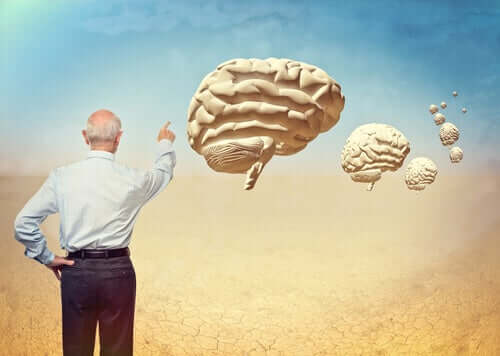We’re all getting old. Like it or not, we know that our cells age over time and that our physical appearance and cognition change over time. One of the areas involved in the study of these changes at the neural level is the neuropsychology of aging.
According to the World Health Organization (WHO), from a biological point of view, aging is the result of the accumulation of a wide variety of molecular and cellular damage over time, leading to a gradual decrease in physical and mental cellular damage.
In addition, aging also leads to an increased risk of disease and ultimately death.
However, in addition to biological changes, there are also other factors that influence aging, so they also influence the physical and social environment, especially the home, ward, and communities surrounding the person.
In addition, the personal characteristics of each person (sex, ethnicity, socioeconomic status?) They also have to do with the way we age.
Physiological changes that occur during normal aging can cause functional losses and depend on several factors:
Conditions such as high blood pressure, diabetes and cardiovascular disease over time mean a loss of physical and functional abilities; for example, anxiety and depression increase the risk of developing cognitive decline.
In normal aging, the degree of loss of function is influenced by the brain and cognitive reserve. Cognitive reserve is the ability of the adult brain to maintain normal functioning when affected by aggression.
Thus, the impact of aggression is less when there is more cognitive reserve, in fact, healthy brain tissue is able to provide the loss of neurons and synapses, so in individuals with low cognitive reserves the same pathology would produce a greater deficit.
In this sense, the neuropsychological model of aging focuses on the relationship between cognition and risk factors, protective factors, the brain and the clinical condition of patients, so for the study of age-related cognitive changes certain aspects of cognition are analyzed such as:
About overall cognitive status, functional activity and mood
About processing speed and attention:
Finally, on visuospace, visusorreceptive and visuoconstructive functions:
In aging it is important the individual variability of each, which leads us to present such or such change of our body, however, several factors contribute to this variability:
As we age, some cognitive functions are more affected than others. Thus, aging affects fluid abilities more than “crystallized” abilities. The former include reasoning, working memory, processing speed, etc. They refer to accumulated knowledge and experience.
Thus, we know from research that the deterioration of some functions begins in young people, while others remain at the same level until old age, in this way certain functions such as vocabulary, general information or memory of past historical or personal episodes remain relatively stable.
Other functions, such as arithmetic ability, decline after age 25; information processing speed, episodic memory, and verbal fluency decrease after age 70.
In many age-related pathologies, there are mild cognitive impairments (LCC). Cognitive impairment is higher than the age group in question, not meeting the established criteria for dementia.
Thus, according to Petersen (2001), for the diagnosis of CSD, it is necessary to observe the following symptoms for at least six months:
Thus, it seems clear that with age, cognitive functions decrease, the elderly population is increasing and therefore mechanisms are needed to improve their quality of life.
The world must be prepared to address subjectively and fully the problems associated with the gradual ageing of the population that may arise.

